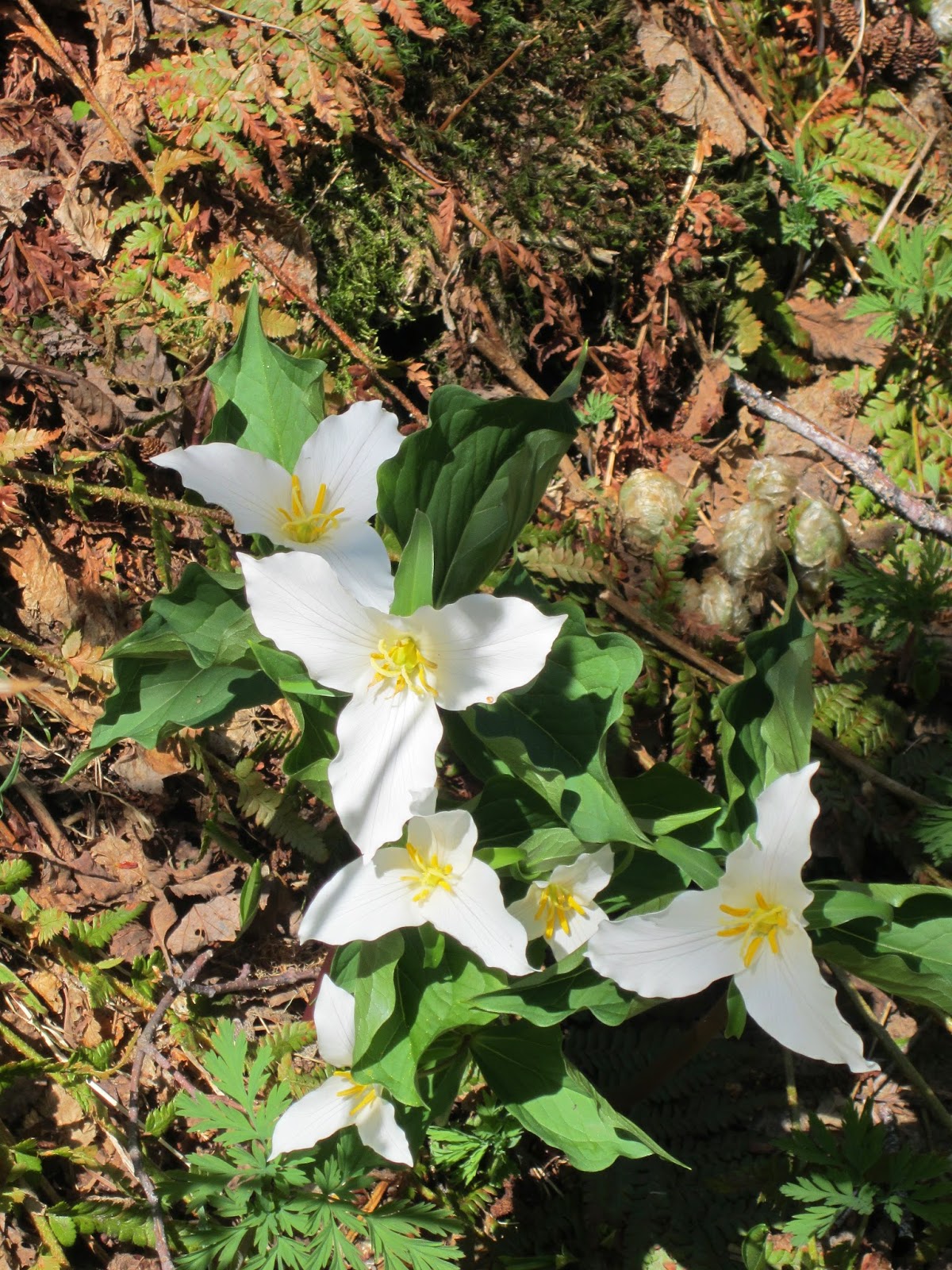Up at 6 am with a long drive north to the Anacortes Community Forest Lands where we met at 9 am with the rest of the Happy Hiker’s group at the trailhead to Whistle Lake and Sugar Loaf. There were 16 people in this week’s group with 10 deciding to go on to Sugar Loaf (a 6 to 7 mile round trip) and 6 preferring to walk around Whistle Lake (a 4 mile round trip). All the printed and on-line information said there was a privy at the trailhead but when we got there we couldn’t find it. As it turned out it was a ways down the trail at a junction where several other trails connected rather than where we parked the cars. The entire park is crisscrossed with numerous trails so a map of the area is essential. The trails are numbered and there are adequate signs to keep hikers on the right course. Dogs on leash, bikes, horses and hikers are permitted but no motor powered vehicles are allowed.
This is a casual congenial hiking group of mostly retired folks with people able to proceed at their own pace. We meet together and then head off usually in small groups with some turning back before others. At the end of the day a check is made to make sure everyone is accounted for but other than that it is not as regimented or organized as the Mountaineering activities.
A group of us decided to go around the lake instead of hiking the longer distance to Sugar Loaf but upon reaching Whistle Lake some decided that was far enough and agreed to turn back. However, they later walked further beginning at the end of the lake loop but not going entirely around. The two of us continued on around the lake. We could hear a noisy group of people on the far side of the lake and soon began to smell smoke. No campfires are allowed in this park so we wondered where the smoke was coming from. When we stopped for lunch we saw a group of teenagers or young adults on an island in the middle of the lake. They did have a campfire and so the mystery of the smoke was solved. They were the source of all the noise we had been hearing too.
This is a woodsy forest trail with parts of it rocky, muddy and steep, trekking poles are a real asset and sometimes a necessity. The total elevation gain ended up being approximately 500 feet but it was up and down like a roller coaster and not just up. We heard many different bird calls but only saw a hummingbird, a woodpecker and juncos. Some of the flowers we have become accustomed to seeing were not in evidence but there were several different kinds that we had not seen in such numbers or in a few cases not at all yet this year.
One of the surprises was Indian Paintbrush. We saw this orange variety and also a deeper red-orange type.
There was a lot of wild or Nootka rose like this example. Nootka rose has large flowers and lots of thorns; the Bald Hip rose has fewer thorns and smaller blossoms. Both have a lovely perfume.
The beautiful little Twinflowers were everywhere. We were able to look inside the flower of one plant to view the delicate two-toned interior.
Honeysuckle
Oregon Sedum also known as Stonecrop is a succulent plant we found growing in patches along the rocky edges of the trail. In places along the rocky lake bank we saw the Paintbrush and Stonecrop growing side-by-side.
We had not previously seen this type of orchid, called Coral Root, growing in many places or in groups of so many plants.
Two view of Whistle Lake from the around-the-lake trail
One small pond to the side of the trail was filled with water lilies.
There were a few trees and branches down here and there along the trail but they had been cut and the trail was free and clear.
Some of the downed trees were very large and already had ferns growing on them. The fallen trees and old stumps often become nurse logs and homes to new young trees and plants.
At this time of year there are lots of flowers in bloom so we hope to see more when we go out the next time. The naturalist class through the Mountaineers is making me look closely at everything and that takes time but makes the hikes interesting and enriching.


























































